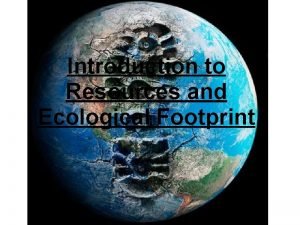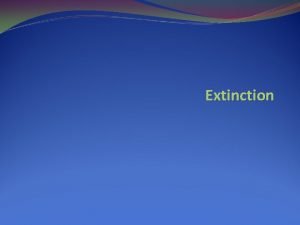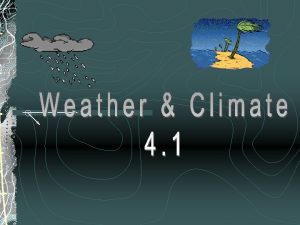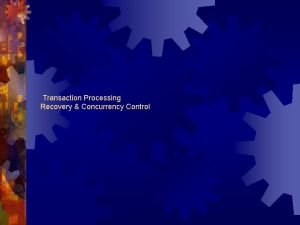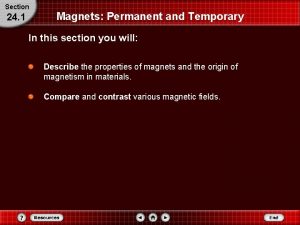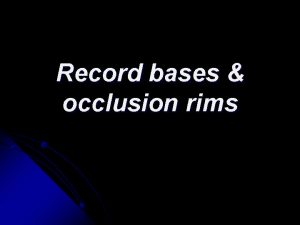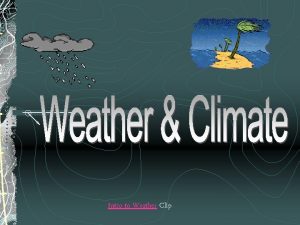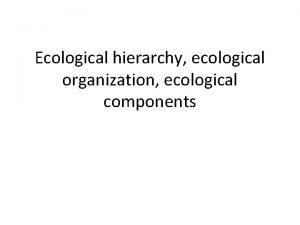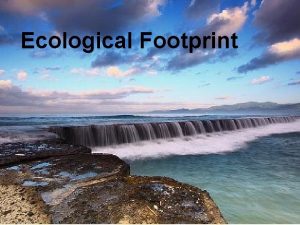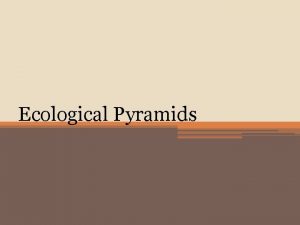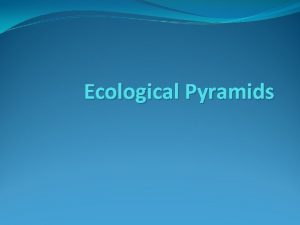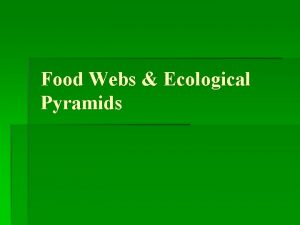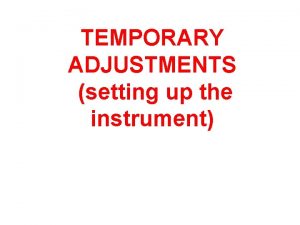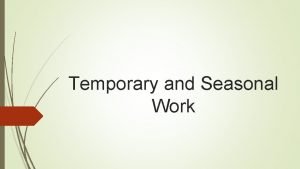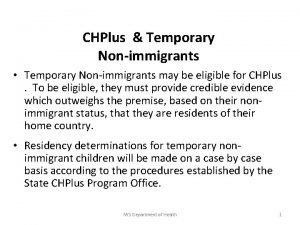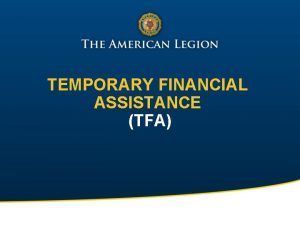Ecological Changes Shortterm effects changes have temporary Example




















- Slides: 20

Ecological Changes

�Short-term effects changes have temporary ◦ Example: shortage of rain may cause a river bed to dry up but the plant and animal life survives �Permanent changes in conditions can lead to extinction of animals �Animals adapt to their environments ◦ Example: Worms like dark, damp conditions. Changing Food Webs

Reasons for change: 1. Predation �Predators eat smaller animals, meaning the smaller animals need to breed more quickly 2. Disease �Disease can produce a lack of one type of animal in a given area, thus affecting the other types of animals 3. Competition �The introduction of one animal to an area can lead to a decrease in the population of other animals �Example: Red squirrel population in Britain has decreased since the grey squirrel was introduced Changing Food Webs

Reasons for change: 4. Human Action �Activities of human beings affect terrestrial and marine food webs �Example: cutting down forests affects animals in these habitats; fish farming in Scotland has affected populations of sea animals 5. Disasters �Oil pollution, radiation, industrial waste Changing Food Webs

Factors affecting where animals and plants will be found: 1. Temperature of environment This cactus found in The spring Gentian Arizona grows to a is famous for its height of 12 feet. It blue flowers and stores every grows where the available amount of temperature is low. water. Environmental Factors

Factors affecting where animals and plants will be found: 2. Humidity of air Mosses are simple plants that do not have the ability to absorb water. They are found in damp places. Environmental Factors

Factors affecting where animals and plants will be found: 3. Light intensity The amount of light in an environment is measured with a light meter similar to that used with a camera. Environmental Factors

Factors affecting where animals and plants will be found: 4. p. H The color of hydrangeas changes from pink to blue depending upon the acidity the soil. Theofacidity of the soil can be measured with p. H paper. The soil in high rainfall areas tends to be acidic. Plants like rhododendrons and azaleas grow in acidic soil. Environmental Factors

Factors affecting where animals and plants will be found: 5. Water flow rate The flow rate of moving water can be measured using a cork and determining how fast it flows in a stream. Environmental Factors

Animals living in fast-moving streams end to have streamlined bodies to cope with the high flow rate. High Water Flow Rate

These animals can survive in stiller waters. Low Water Flow Rate

Factors affecting where animals and plants will be found: 6. Wind flow rate How fast the wind is blowing in a certain area is measured with a wind speed gauge. Some trees become windswept, and in windy conditions, some trees will not grow at all. Environmental Factors

�Populations of different living things are found within each habitat. ◦ Population: the number of a particular species in a certain area �Climate affects population ◦ Example: The Osprey migrate to Africa in the winter to return to breed each spring. Population Change

Factors affecting population change: 1. Predators �During the 1970 s, huge numbers of ladybugs appeared. �The change in ladybug numbers was due to an increase in the population of the greenfly. �The increase in food for ladybugs allowed their population to grow. Population Change

Factors affecting population change: 2. Competition �Competition for space: Ladybug overcrowding was so bad that, in some places, they covered the ground Population Change

Factors affecting population change: 3. Disease �Spreads quickly through large, dense populations but slowly through smaller populations. Population Change

Factors affecting population change: 4. Migration �Birds flying south during cold weather months can cause seasonal changes in population Population Change

Factors affecting population change: 5. Climate �Changes in weather can cause changes in populations Dinosaurs may have disappeared due to climate change. Population Change

Factors affecting population change: 5. Climate �Changes in weather can cause changes in populations The Osprey migrate to Africa in the winter to return to breed each spring. Population Change

Factors affecting population change: 6. Floods and famine �Both factors can change where people and animals live Aftermath of Hurricane Katrina Population Change
 Memory definition
Memory definition Shortterm housing
Shortterm housing What 3d shape has 6 faces 8 vertices and 12 edges
What 3d shape has 6 faces 8 vertices and 12 edges Changes in latitudes, changes in attitudes meaning
Changes in latitudes, changes in attitudes meaning Physical change examples
Physical change examples Ecological fallacy
Ecological fallacy Ecological footprint definition ap human geography
Ecological footprint definition ap human geography Extinction effects have not been documented clearly in
Extinction effects have not been documented clearly in Flat lands that have only small changes in elevation
Flat lands that have only small changes in elevation Temporary behavior of atmosphere
Temporary behavior of atmosphere Temporary update problem in dbms
Temporary update problem in dbms Observation
Observation Temporary vs permanent magnets
Temporary vs permanent magnets Temporary record base
Temporary record base Temporary endeavor
Temporary endeavor Which type of lines are used to soften a design?
Which type of lines are used to soften a design? Temporary license plate south dakota
Temporary license plate south dakota Ways of making permanent joints
Ways of making permanent joints Temporary and permanent joints
Temporary and permanent joints Are electromagnets permanent or temporary
Are electromagnets permanent or temporary Temporary behavior of atmosphere
Temporary behavior of atmosphere






